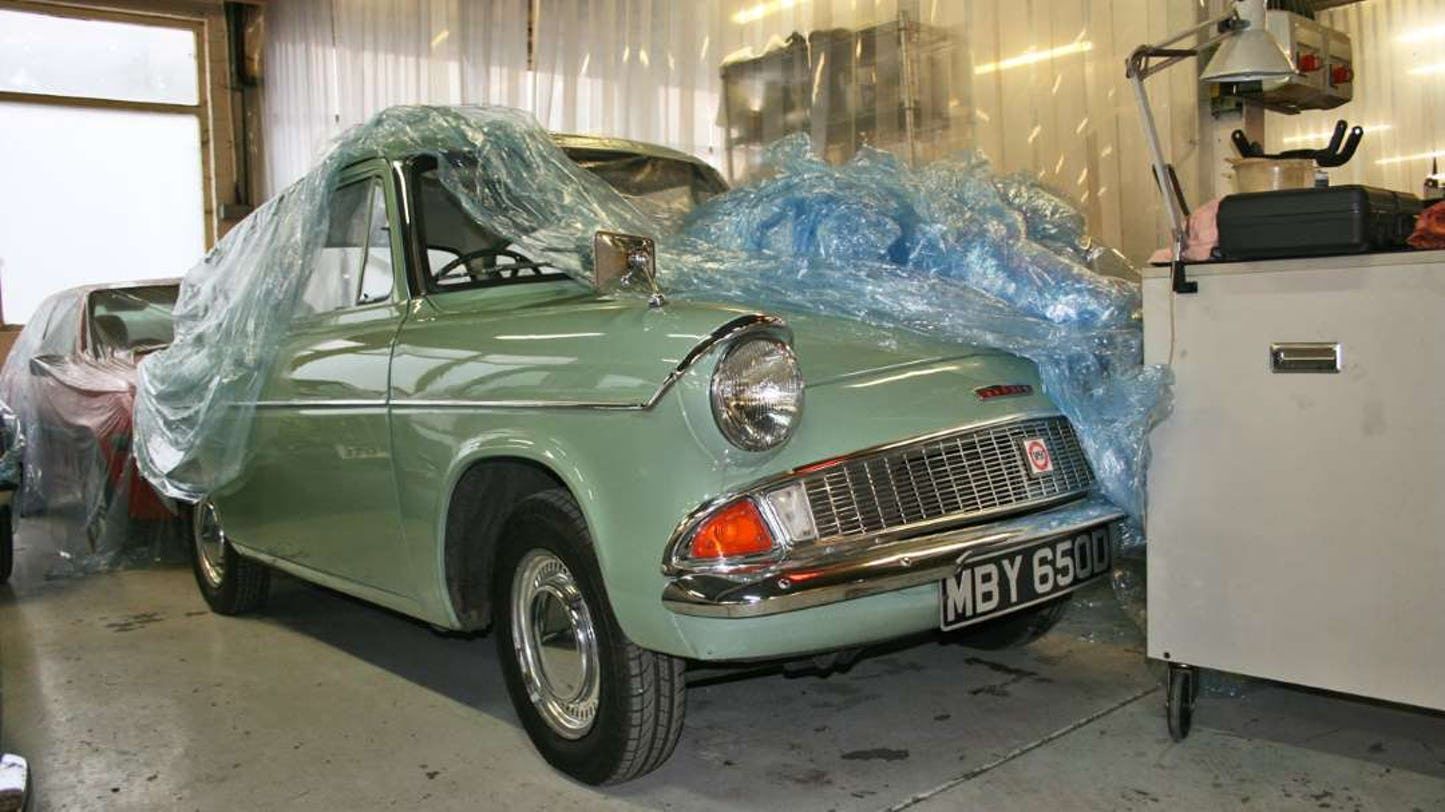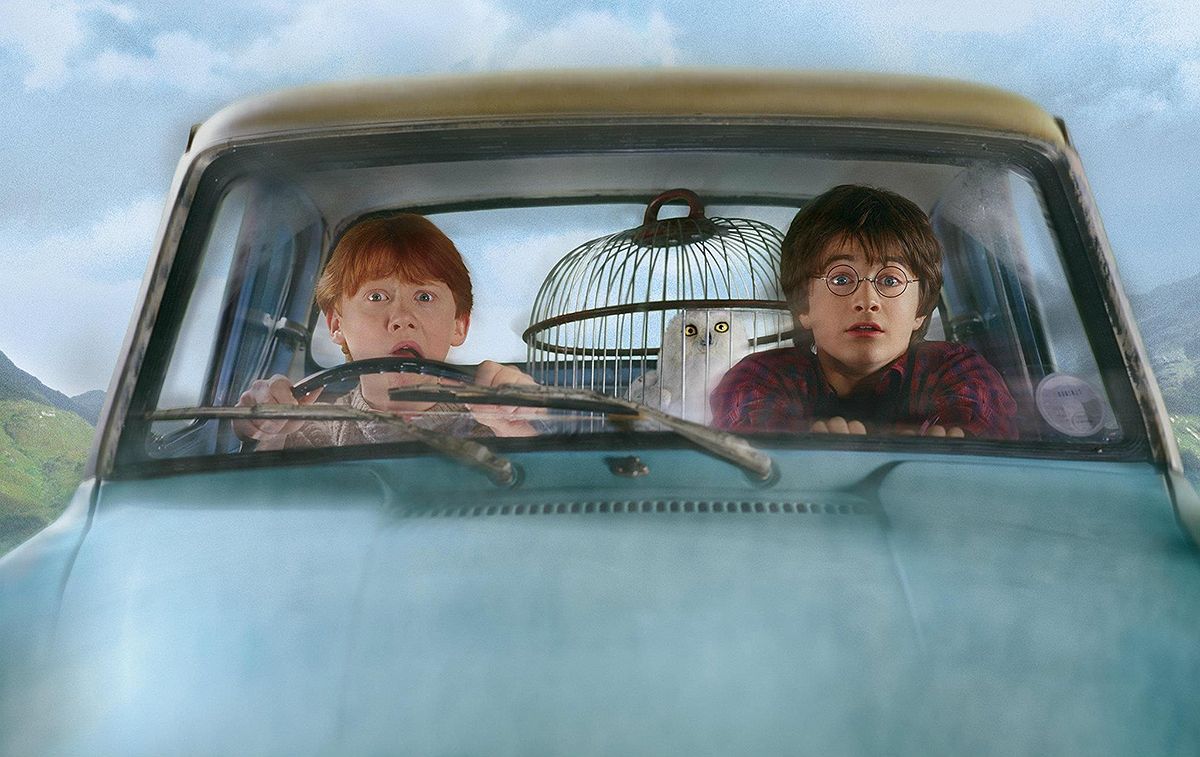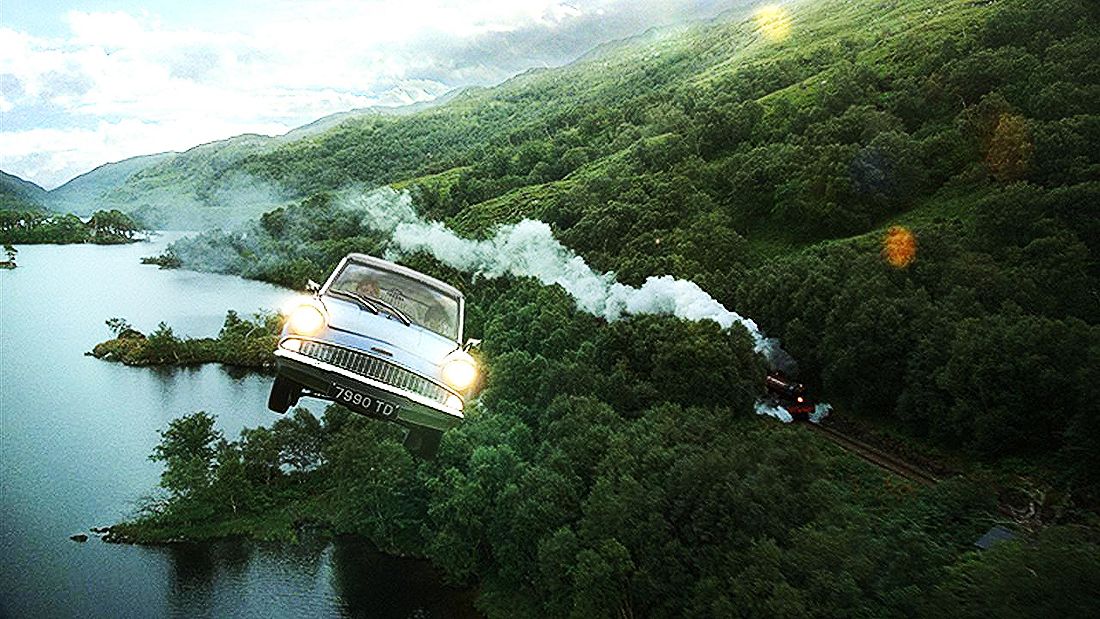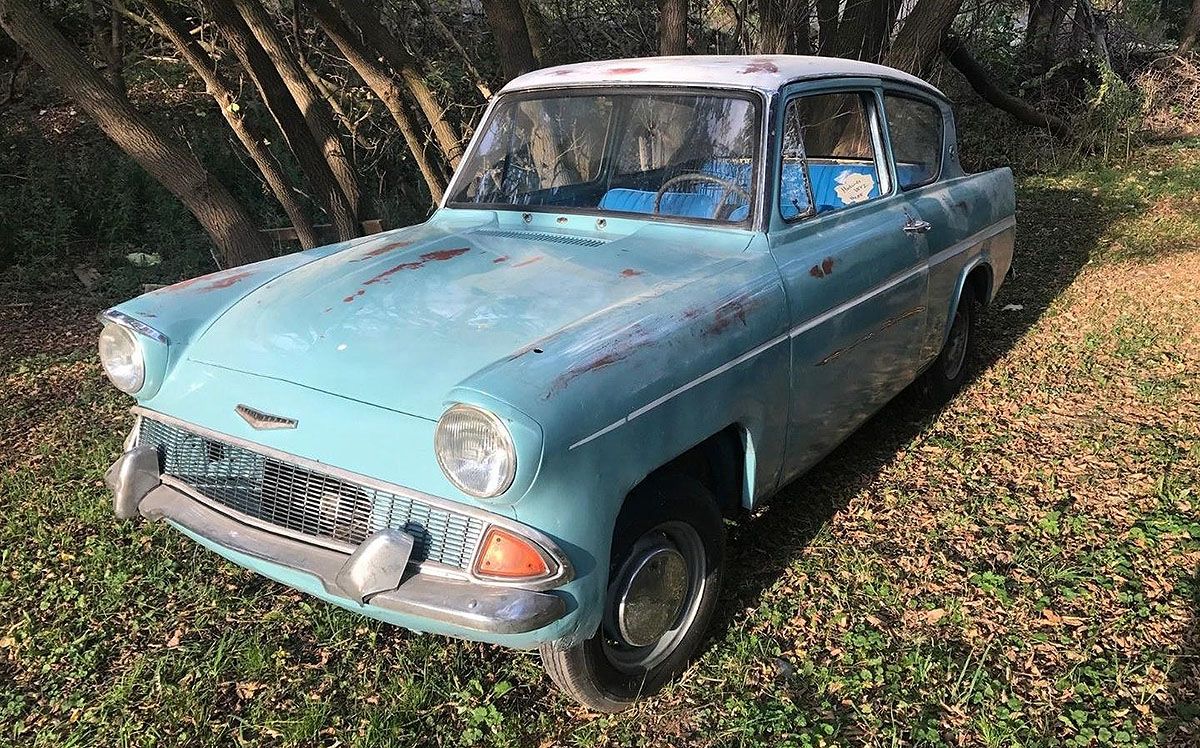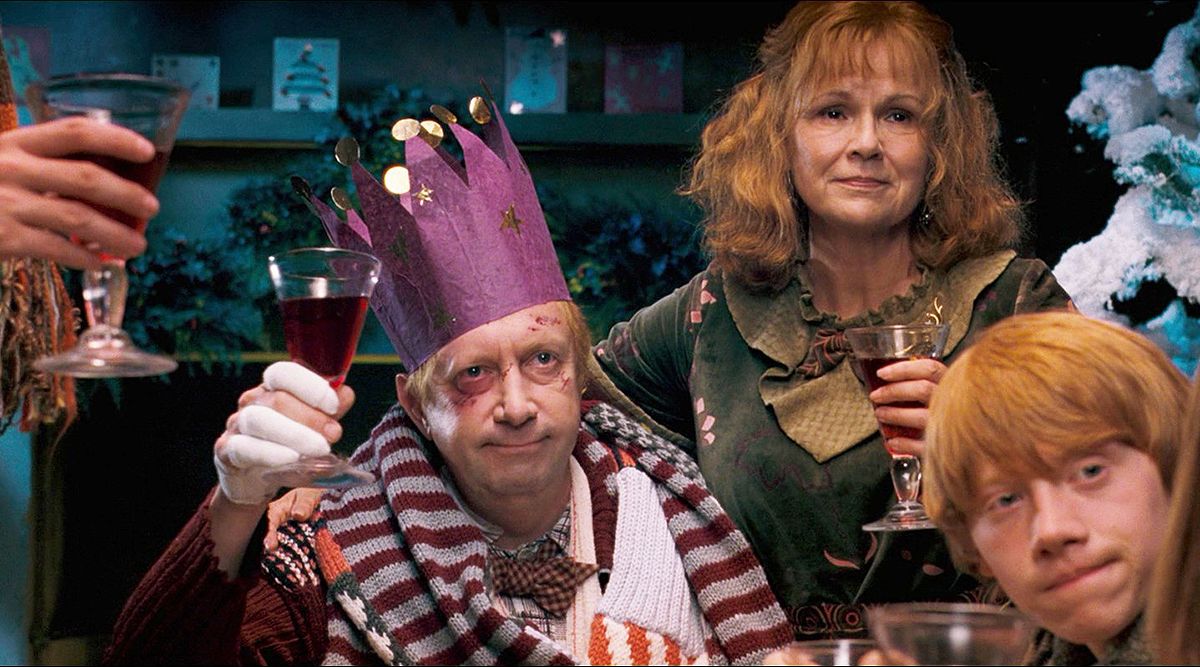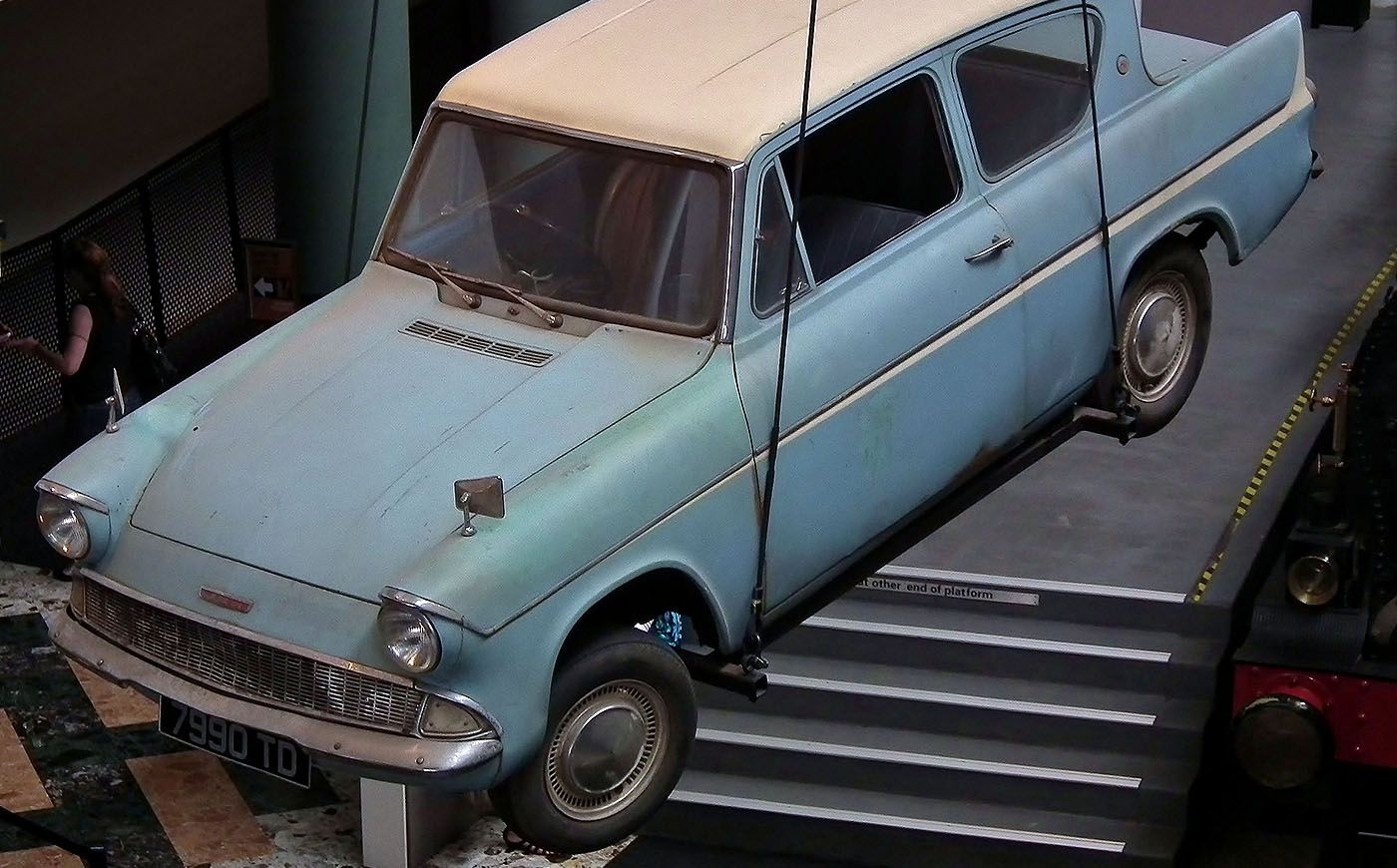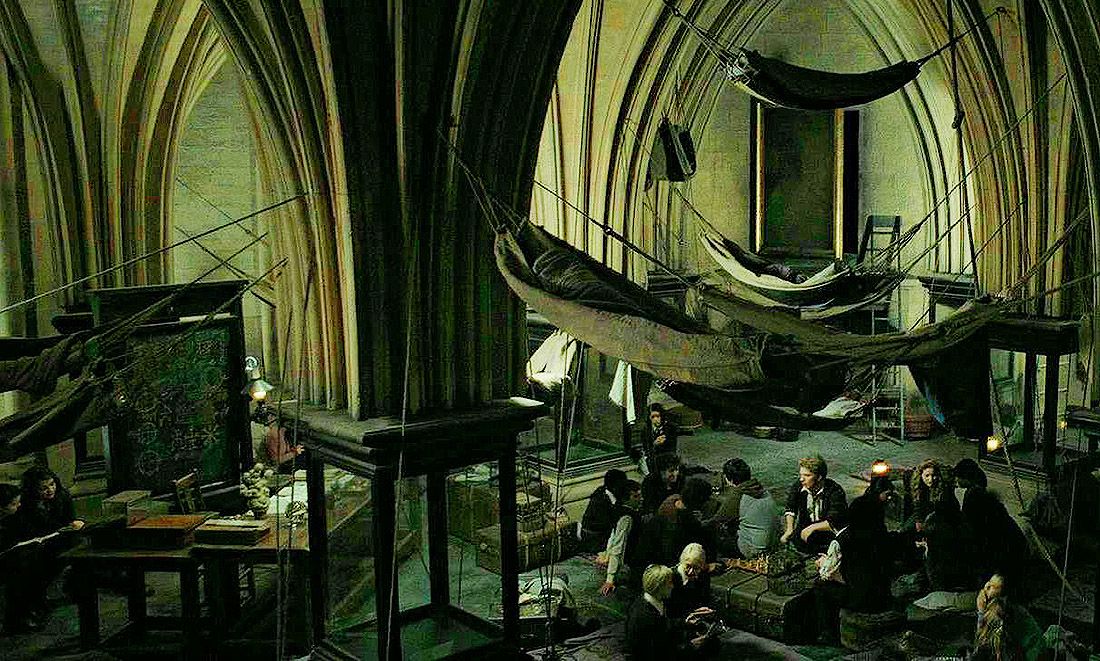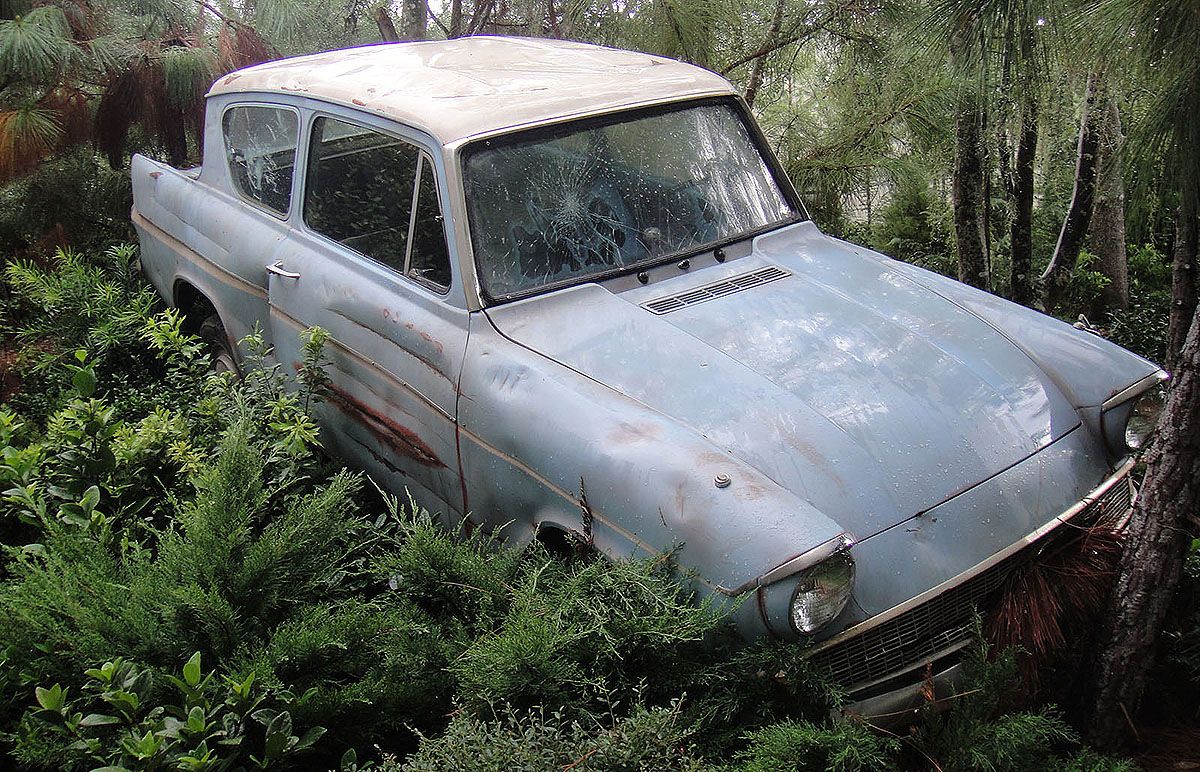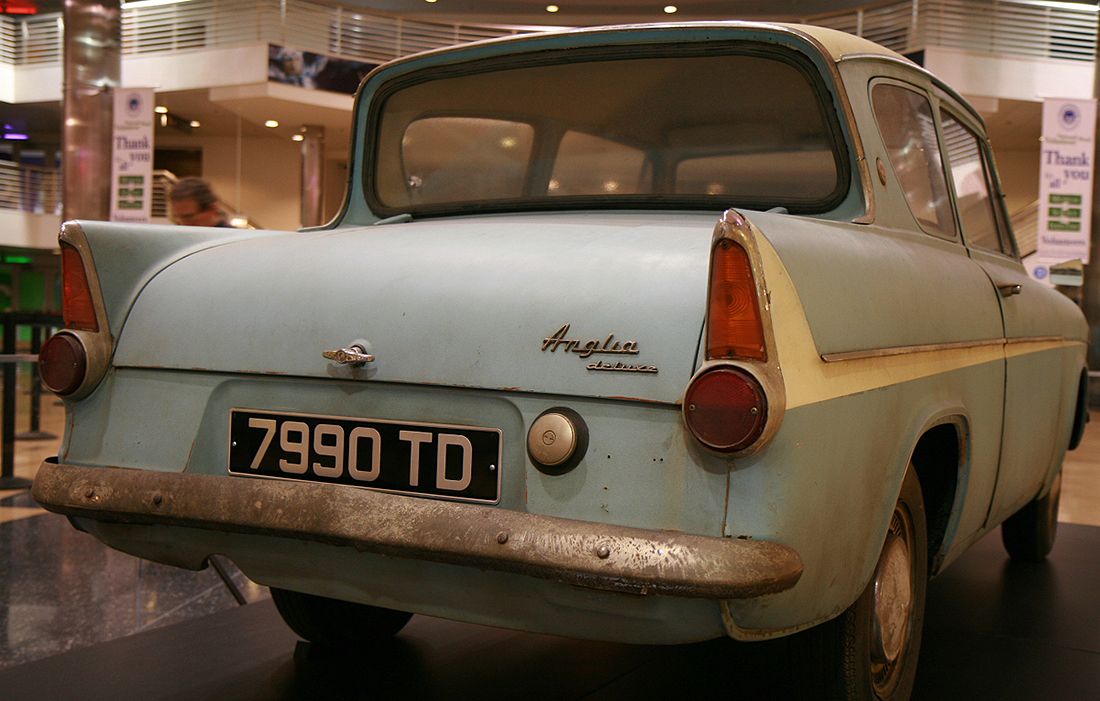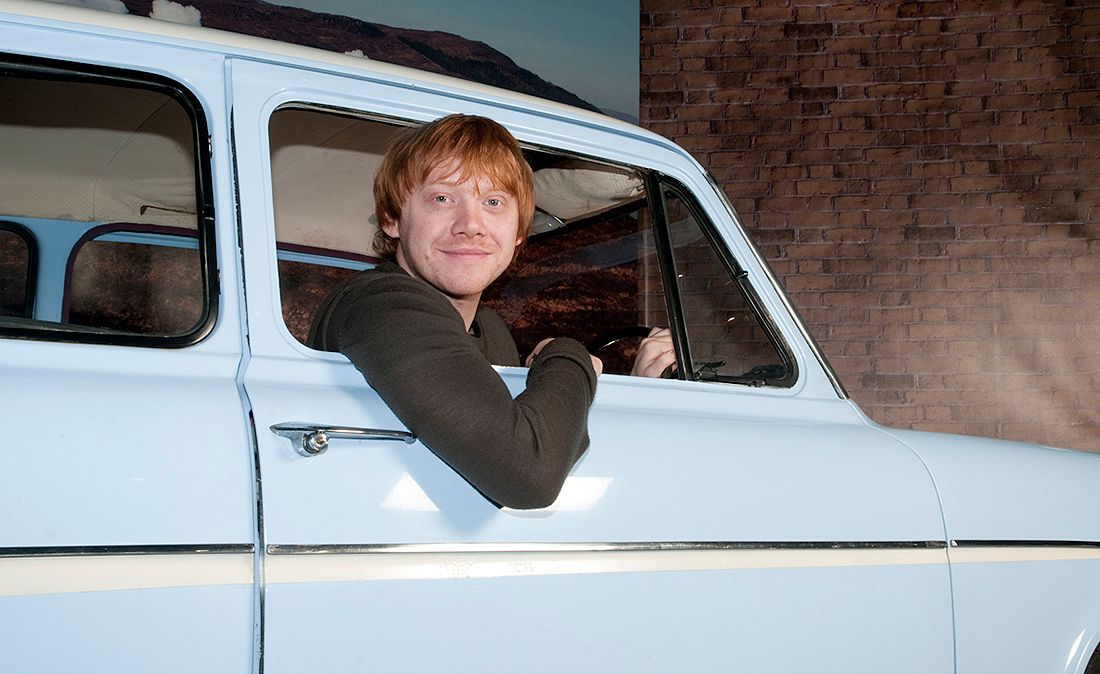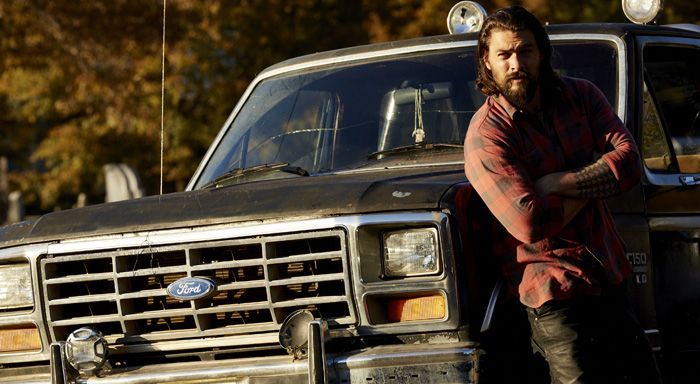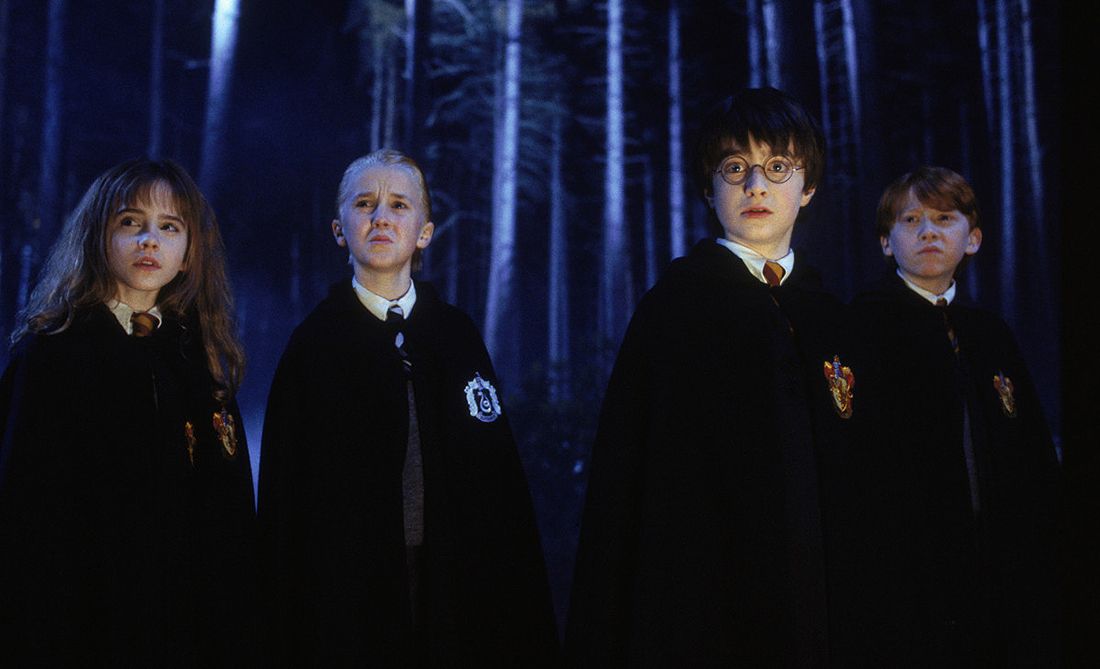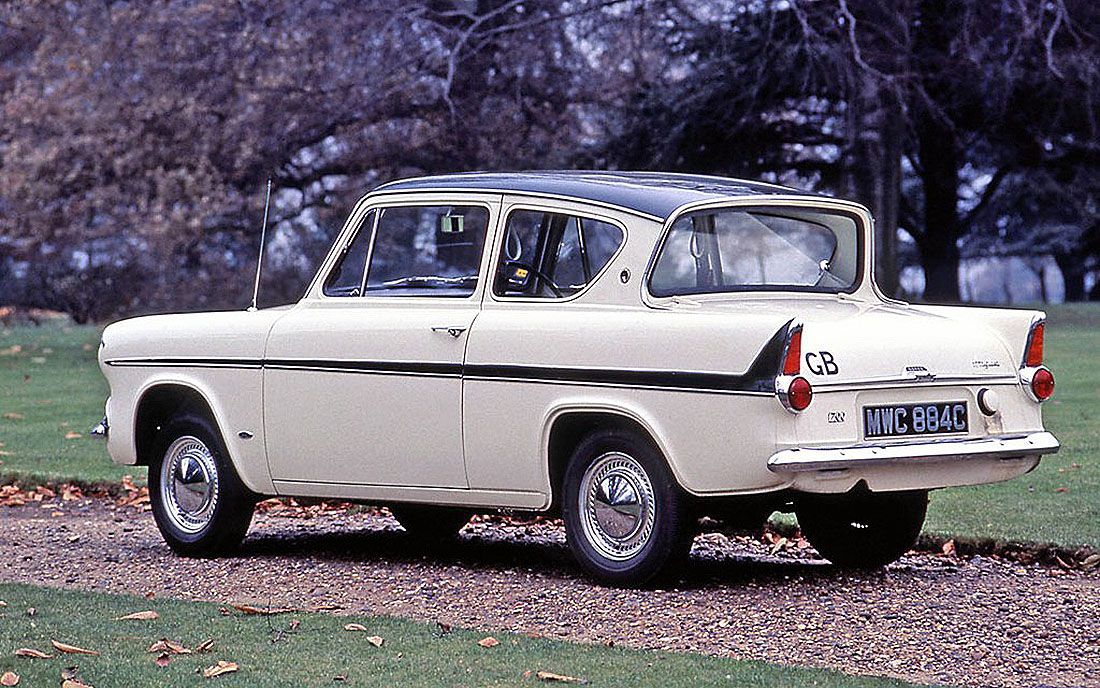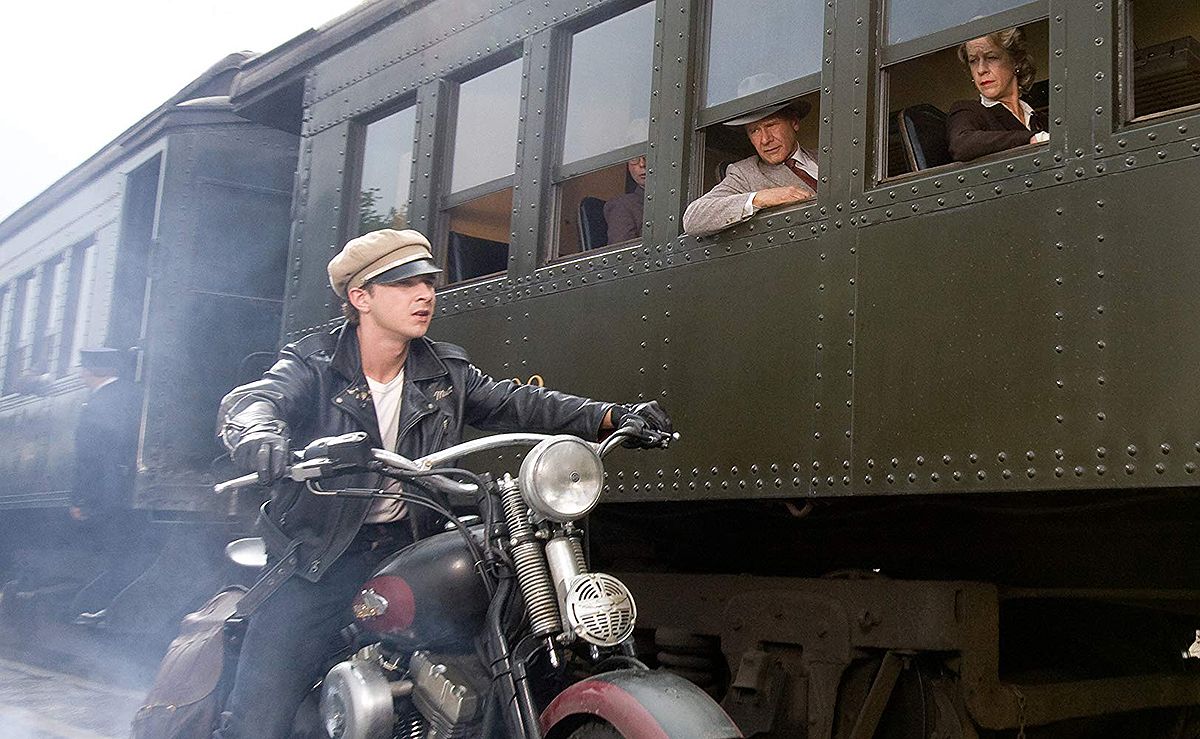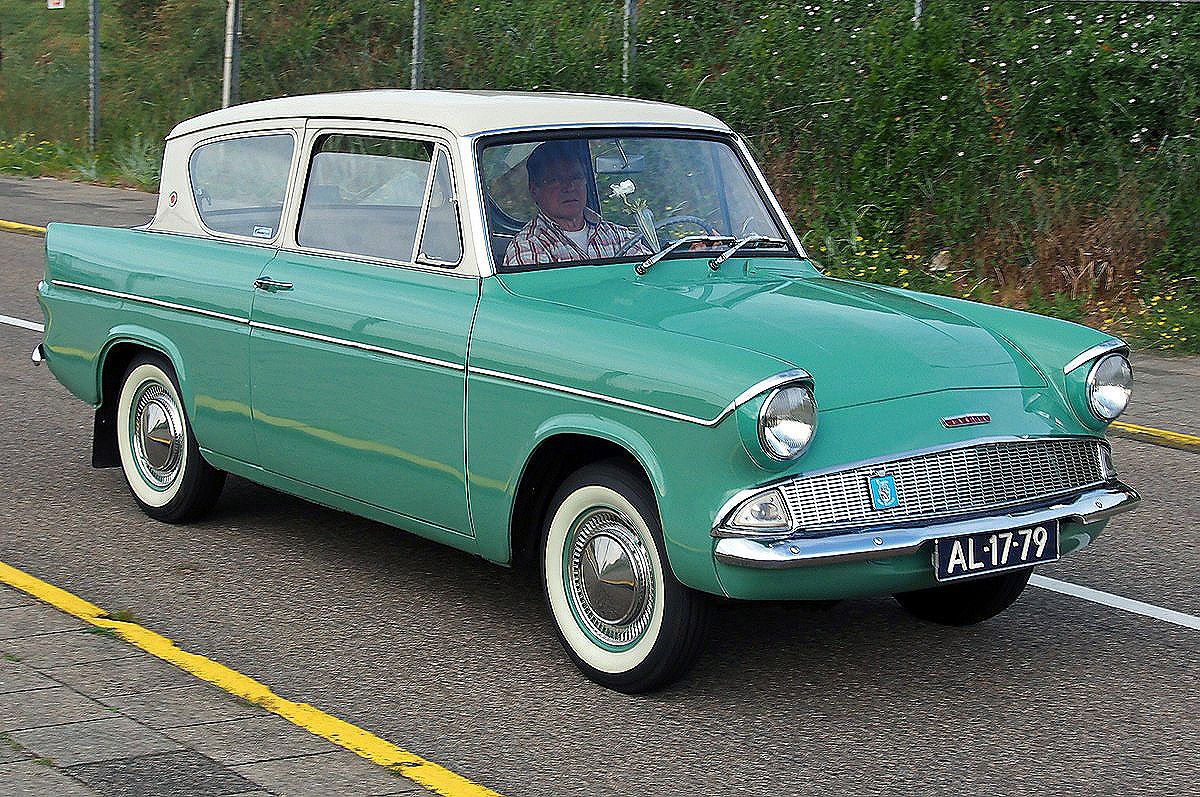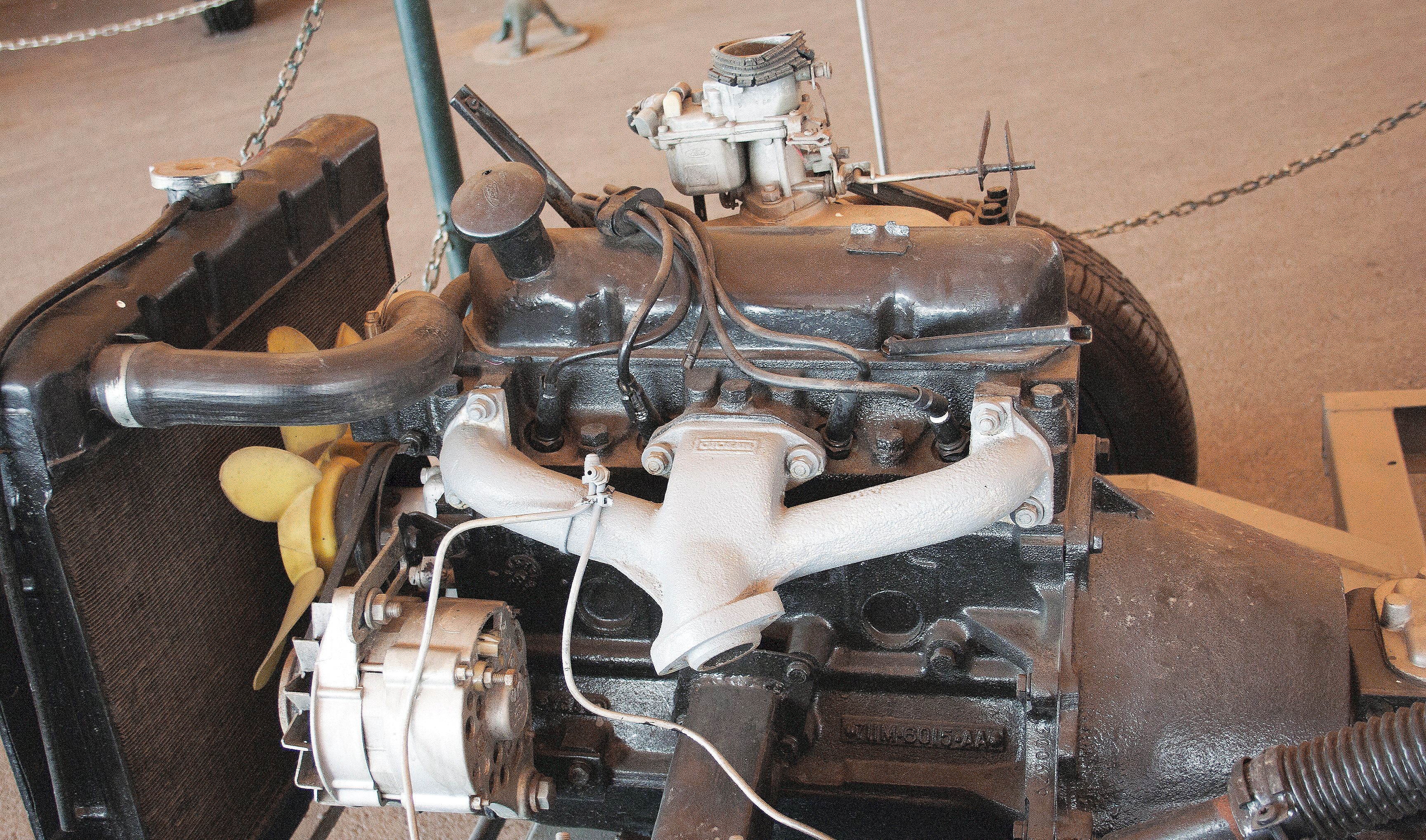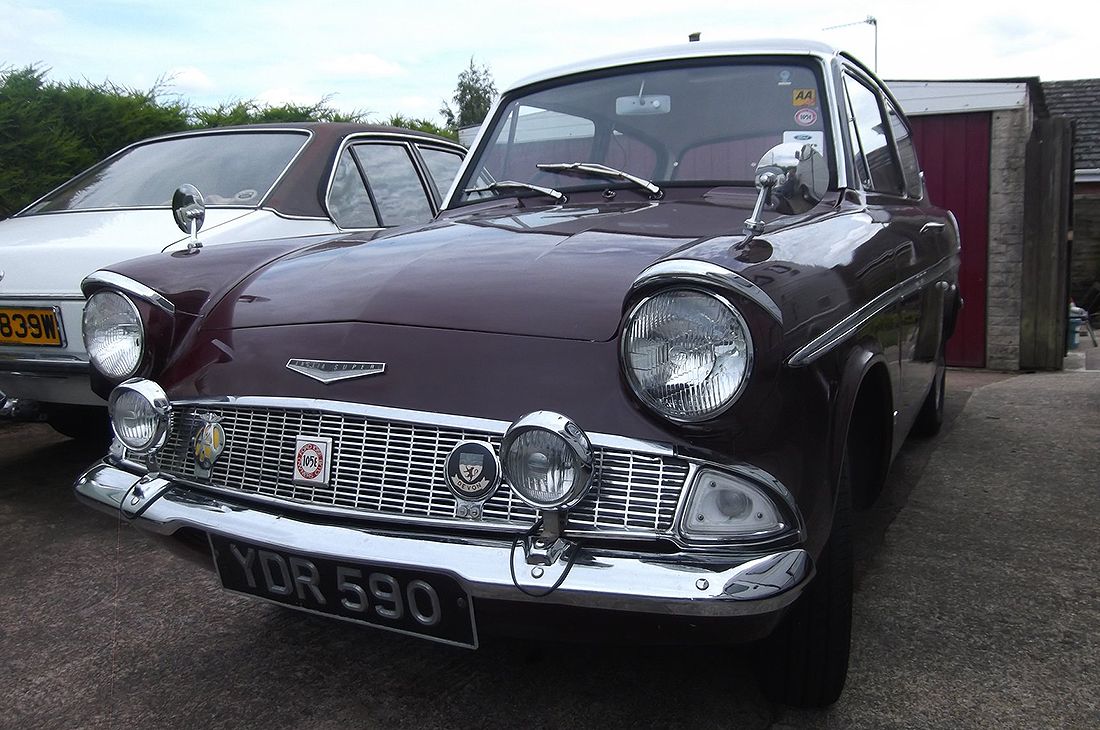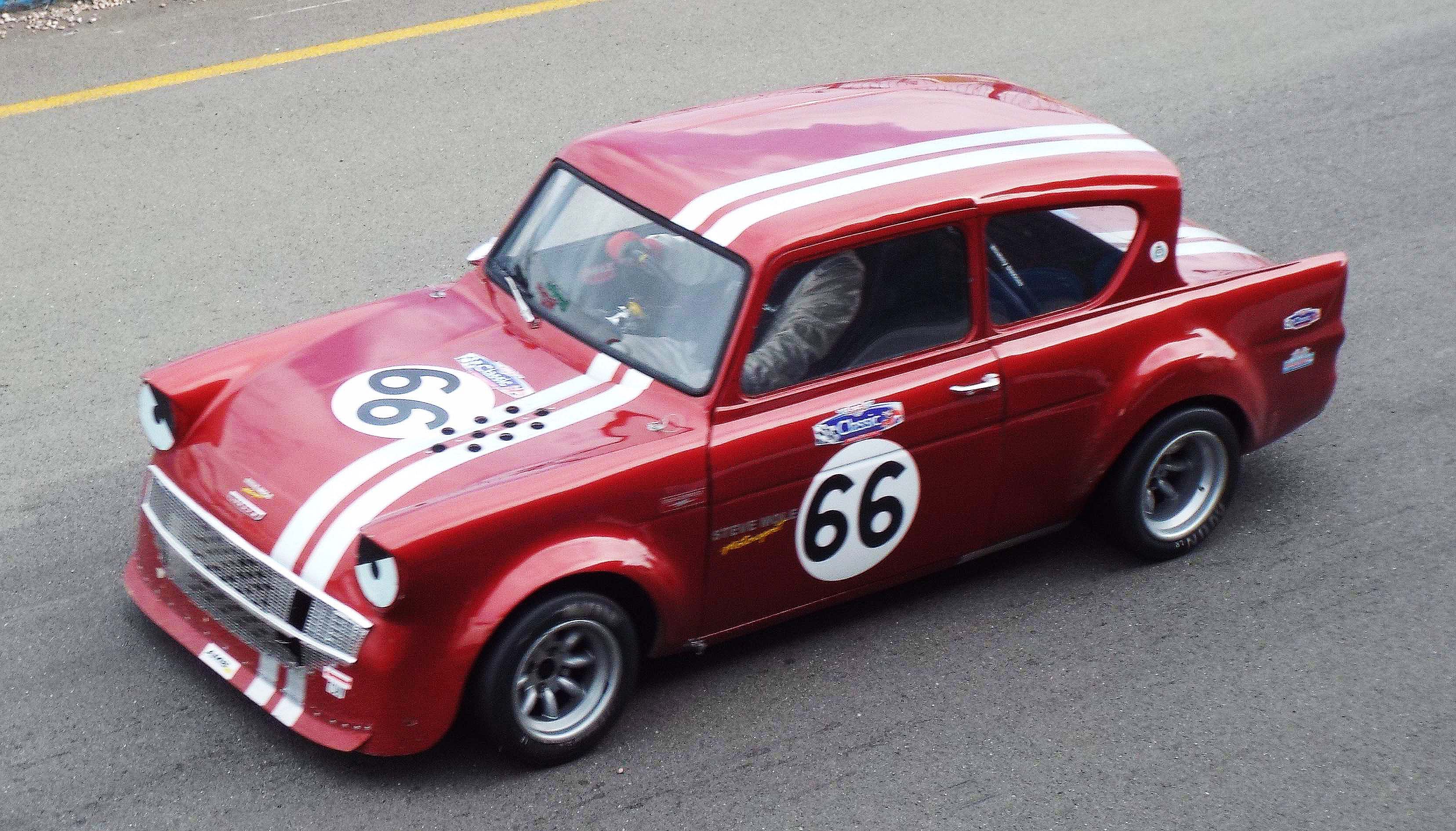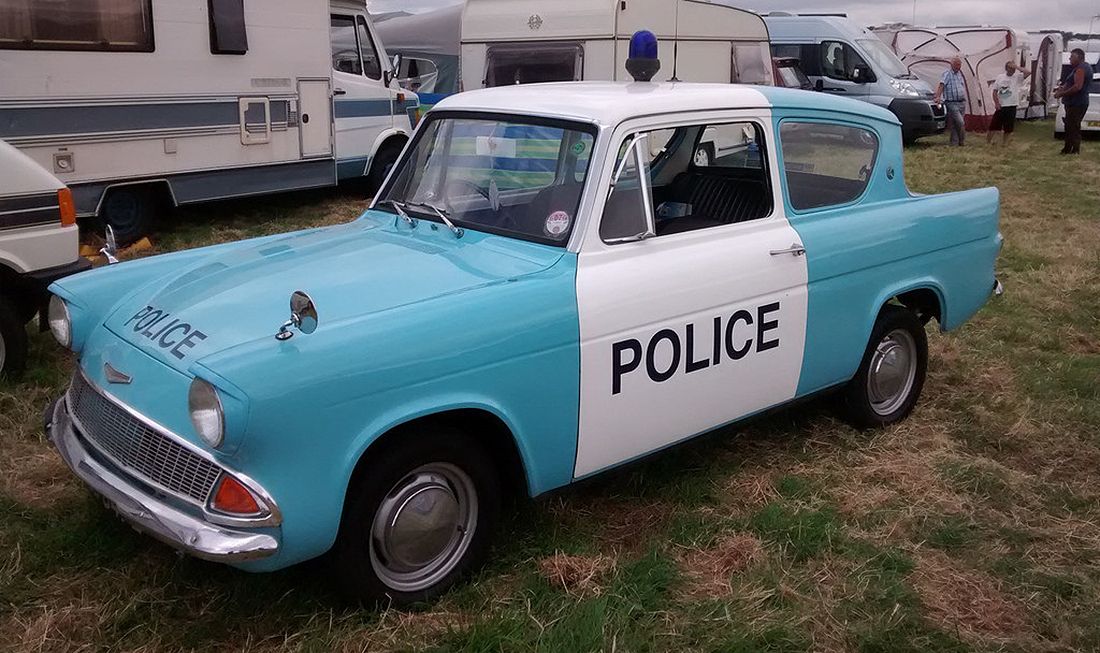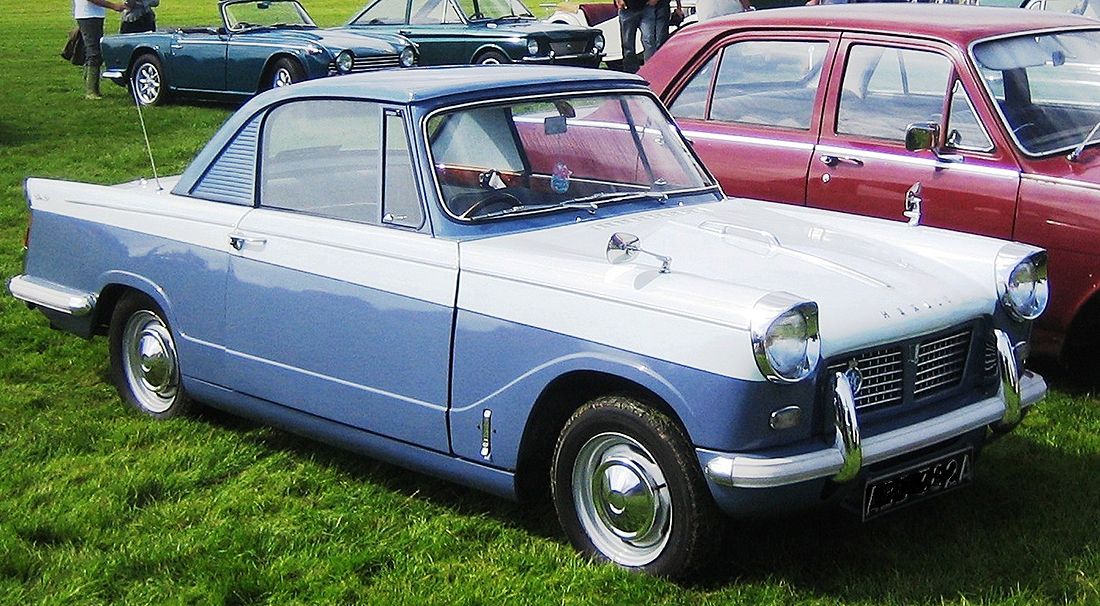When JK Rowling tapped away on her typewriter, weaving the Pottermore universe and its residents, she could not have known the sheer craze it would create. Harry Potter and all the things in magic in his life became close to many a heart, leading to a whole new, very profitable line of merchandising. Amidst the Potter wands, capes, and sorting hats that many kids whined for from hapless parents, there was also the model replicas of the Flying Ford Anglia, the blue car that came to the rescue of Ron and Harry before roaming around the Dark Forest aimlessly.
Updated February 2022: If you're a fan of Harry Potter or the Ford Anglia, you'll be happy to know that we've updated this article with even more interesting facts about the cool and quirky flying car.
The good thing about the Flying Ford Anglia was that the Ford Anglia actually existed. It was quite the popular model in its heydays, too, having been entered into the car market by Ford as competition to the Mini Cooper and the Triumph Herald. It was futuristic, good-looking, and rather affordable, as well, and became quite the crowd favorite before it finally rested its laurels. Of course, since it flew in the Harry Potter series, so enchanted by Ron’s father that it became a rather revered object for Potter fans, as well—even if they had never met a Ford Anglia before. It saved Harry and Ron, could fly, and could not be seen by the Muggles, so it couldn’t be all that bad, right? On that note, here are 21 facts about the flying Ford Anglia from Pottermore.
21 The History Of The Ford Anglia
The Ford Anglia 105E was launched in 1959 and turned out to be a huge success both in the British and Continental markets. The Anglia was sold until 1967, and during the course of those eight years, it it saw plenty of mechanical changes and updates. However, cosmetically, it looked pretty much the same throughout its entire production period. Today, it might be one of the most underrated cars in movie history.
20 The Anglia Has Quite A Fan Following
Needless to say, like with anything within Harry Potter, the flying Ford Anglia became quite a hit with fans, too. One person went ahead and created an all-new Anglia mod for the video game Grand Theft Auto, while several others got the Anglia tattooed on them.
Liam Payne, the singer and musician, even bought a replica of the car and placed it in his garden at home. Of course, then there are the battery-operated Anglias sold at Potter-friendly stores and merchandising outlets. Universal Studios and the Warner Brothers Studio Tour have replicas of the Anglia for fans to come ooh and ah at.
19 JK Rowling Revealed Her Anglia Obsession
The obsession with the Anglia was all started by Rowling and the reason is simple. When Rowling was in school, a new student named Sean Harris had a Ford Anglia. He was a true friend who helped her out during some difficult times.
Rowling said, “some of the happiest memories of my teenage years are zooming off into the darkness in Sean’s car. Harry was rescued by that car, just as the car rescued me from my boredom…” So now you know: everyone loves the Anglia because Rowling loved the Anglia. To a teenage girl, this car came to signify freedom and so it became the car that freed Harry and Ron from certain unpleasantness.
18 Harry Potter’s Anglia Was Genuine
The Anglia in Pottermore was all too very real. In fact, it was an authentic 1962 Ford Anglia 105E Deluxe built in Ford’s UK factory. In the movie, it is enchanted by Arthur Weasley to fly and also to become invisible to the Muggle eye.
The latter was done by installing a device called an “Invisibility Booster” onto it, obviously sourced the from magic provisions and goods shop. It had also been magically modified to fit eight people, six trunks, two owls, and one rat—because that comprised the Weasley family. Of course, it often ferried Harry Potter along with the Weasley family, too.
17 Molly Weasley Knew All about The Car
When Arthur Weasley brought the Anglia home, he appeased his wife Molly by telling her he wanted to take the car apart and understand Muggle technology. The thing is, while Arthur was busy enchanting the car to make it fly and be invisible to Muggles, Molly knew all about it.
In fact, there is even some dialogue between Arthur and Molly in which Molly says, "Yes, Arthur, cars. Imagine a wizard buying a rusty old car and telling his wife all he wanted to do with it was take it apart to see how it worked, while really he was enchanting it to make it fly." So basically, even a wizard cannot hide anything from the all-knowing eyes of his wife.
16 The Flying Effects Came Because Of the Gimbal Head
This car—a very real, non-magic Ford Anglia—needed to become the flying Ford Anglia in Pottermore. According to Pottermore, special effects supervisor John Richardson basically scooped the vehicle out to a shell and then fitted it onto a rotating crane with a special joint called a gimbal head.
The gimbal head is an almost 360-degree movement pivot that let the camera and the stunt team rotate, pitch, and roll the car in just about any direction which was needed if they had to show the car was flying. Of course, the various cars sourced for the shoot were all kept in different conditions, some even cut into half to let the filming happen on the inside.
15 It May Have Met Its End In Harry Potter
Ron and Harry used the car to get to Hogwarts after Dobby sealed off Platform 9¾ to prevent Harry from getting back to school. The car literally began to break apart as it reached Hogwarts and crashed into the Whomping Willow. It then emptied itself and headed off to the Forbidden Forest.
It did show up once to save Harry and Ron from Aragog’s family before it went back to the dark forest. Sometime between 1993 and 1998, it is presumed that it was taken into the Room of Requirement by a Hogwarts’ member and thereby destroyed. However, in 1999, Rowling did say it would appear in another book.
14 One Flying Anglia Went Missing
While the Flying Ford Anglia was always a Pottermore favorite, it made Muggle news headlines when one of the many Anglia on set was taken from a film studio. According to News Wheel, John Richardson later told the press that they had 16 Anglias on set, all of which were differently abled for the shoot.
The one that was boosted was a perfectly finished one used in the Harry Potter and the Chamber of Secrets movie and was probably taken by a fan. Later, the car was found abandoned in the ruins of a castle in Cornwall, perhaps dumped after the fan realized that it couldn’t actually fly.
13 The Ever-Changing Registration Plate
In the movie in which it first appears, Harry Potter and the Chamber of Secrets, the flying Ford Anglia bears the registration 7990 TD. On the cover of one of the editions of the same book, the plate starts with an H. Yet, on other publicity paraphernalia, the car’s license plate reads HOW 777.
In Pottermore, the license plate yet again changes to COS 207— aka Chamber of Secrets, page 207 (the page on the which the car rescues Harry and Ron). And on the cover of a fully illustrated edition, the car’s number plate reads HOW 782D. Clearly, this is an enchanted registration plate, as well, right?
12 Everyone’s Favorite Little Car
Honestly, this car was Rupert Grint’s ultimate prop from the series. It could be because it was his Potterverse character Ron Weasley’s father’s car, enchanted by Arthur Weasley to fly and fit more than what an ordinary car could.
So when The Wizarding World Of Harry Potter opened in 2011, the actors came over in the Knight Bus—except for Ron Weasley and Harry Potter, or should we say Rupert Grint and Daniel Radcliffe. They arrived in style in the flying Ford Anglia, only this time it wasn’t flying but chugging along the road as all Muggle cars do.
11 It Probably Does Not Need Petrol
Let’s go a little off-track here. The Ford Anglia’s fuel tank is about 30 liters. Mathematically speaking, Hogwarts is somewhere in Scotland and even if the car flies, the distance between London and the Scottish border is some 300 miles. So, either Arthur Weasley enchanted the fuel tank to hold several times over its real capacity, or he runs the car on magic.
Also, please consider that most Muggles would be jaw-dropped to find out that a 30-liter tank is drinking closer to a 100-litres or something. With Arthur Weasley, it's safer to assume that the car runs on magic, which is probably why it is still roaming wild in the Forbidden Forest.
10 In Pottermore, It Is an Unsung Hero
The Anglia proved to be quite the rescuer when Harry and Ron came under attack by the acromantulas, aka Aragog’s family. They had gone into the giant spider’s lair seeking some answers. Aragog, who was Hagrid’s friend, could not let all this “fresh meat” go waste and so decided to let his children feast on Harry and Ron.
Only the flying Ford Anglia, wild as it may have been, would have none of it. It swooped down and rescued the boys from Aragog’s lair, flew them out of the forest, and deposited them safely. Then it trundled off back into the Forbidden Forest to be a wild thing once more.
9 The Design Was Way Ahead Of Time
We may not think of it as great shakes now but at the time of its launch, the Anglia was pretty futuristically designed. According to Jalopnik, the distinctive rear window with a reverse slope and functional rear fins made it look like a modern car, albeit smaller in size.
Of course, in the US, there was no small car by Ford around that time. That reverse window let the Anglia keep a competitive size and price, and the reverse slope gave the rear passenger plenty of headroom, which was the main reason for its popularity. Another fringe benefit was better visibility in bad weather conditions.
8 A Little Too Ahead Of Its Time?
Of course, sometimes things happen a little too strangely, as well. According to Motoring Research, the same color and model of the car appears in the background (thankfully) of a motorcycle chase scene in the 2008 movie Indiana Jones and the Kingdom of the Crystal Skull.
What makes it funny is that the movie is set in 1957 and the Anglia 105E was released two years later in 59 (actually, almost 1960). So while we understand the Anglia was way ahead of its time, its appearance in a 1957 set is a tad too reminiscent of a glitch in the universe. This is why film studios really need to put in the research, lest we write funny articles about them later.
7 Quite The Colorful Offering
Another first for the model was the range of colors on offer by the Ford Anglia, the likes of which had not been seen before in the rather conservative and prim England of the time. While the ever-present white and silver were available, there were pastel yellows and greens and some models were also available in a two-tone combination.
Then, the Anglia also came in a number of body variations, so, basically, there was an Anglia for every need. You could get a two-door, a four-door, a wagon, a van, or a pickup! A Europe-only model called the Sportsman also had a spare tire on its back, so this was a car that met a buyer’s every need.
6 The Engine Was Brand New
According to Read Cars, Anglia also came with a brand new engine and moved on from the side valve, flathead of the 100E that seemed to be the popular choice for every car of the time. The new powerplant had a high-revving overhead valve that could crank out 39 horsepower at 5000rpm.
The engine was dubbed the Kent and was a 1-liter unit that was successful enough to be continuously used by Ford in various avatars till the start of the 21st century. The four-speed manual transmission was a synchromesh and the first of its kind fitted to a Ford salon in the Dagenham factory.
5 It Was Very Affordable
According to Hagerty, the Ford Anglia was the cheapest four-wheel car in the UK at the time. In 1950, a Ford Anglia would have cost around £310, which if you calculate today, would be close to £10,000. In 1950, the cost of a house on an average was £1,940, so the Anglia was five or six times cheaper than a house, as a small car should be.
This was one of the reasons it sold like hotcakes; it was cheap, came in great colors, every kind of configuration, and it had a brand new engine under the hood that could do 36 horsepower, which was a decent enough number for the cars of the 50s. There was no Flying Ford Anglia in the 50s and the 60s but the sales of the Ford Anglia still flew off the charts.
4 There’s Even A Dedicated Racing Anglia
Now, 36 horsepower does not sound like much, and admittedly for today’s cars, it’s a joke. But in the 50s and the 60s, the Anglia was swift and fast. According to Speed Hunters, someone decided to build a dedicated Anglia race car and it has been zipping around tracks since 1973. Of course, when you pop the hood, nothing in it is remotely related to the original Anglia anymore.
The engine itself is a Volvo motor, supercharged and mutated to a great degree by a Grp A touring car engineer. This isn’t the only Anglia in racing, though; in fact, some people have even built cars to look like Anglias just because they loved the car, even if they didn’t like what lay under the hood.
3 The Ford Anglia Went On To Become A Panda Car
In the 50s and the 60s, London exploded or, rather, the population exploded. And so, the bobbies on the beat could not cover as much ground as they once could. The London beat constables needed to use motorized vehicles to get about efficiently this brought about the black-and-white panda cars.
Panda was actually an acronym for Patrol And Neighbourhood Deployment Area but they came up with it because the cars looked like motorized panda bears. One of the cars on offer was the Ford Anglia but since Ford offered them massive discounts on this one, the police could only get these in pale blue and white.
2 Anglia’s Competition Outlived It
The Ford Focus is a true descendant of the Anglia in terms of usage, economy, and target audience. But size-wise, the Fiesta is now the smallest Ford built in the UK, as was once the Anglia. Nevertheless, for all the love shown to the Anglia, its competition lasted longer—far longer.
The Triumph Herald outlived the Anglia by four years, which isn’t much. But the Mini Cooper is still alive and somewhat well, and has turned into an iconic brand, something that the Anglia could not do. However, Pottermore is loyally in love with the Anglia and would have nothing to do with the Mini, a mere Muggle car!


